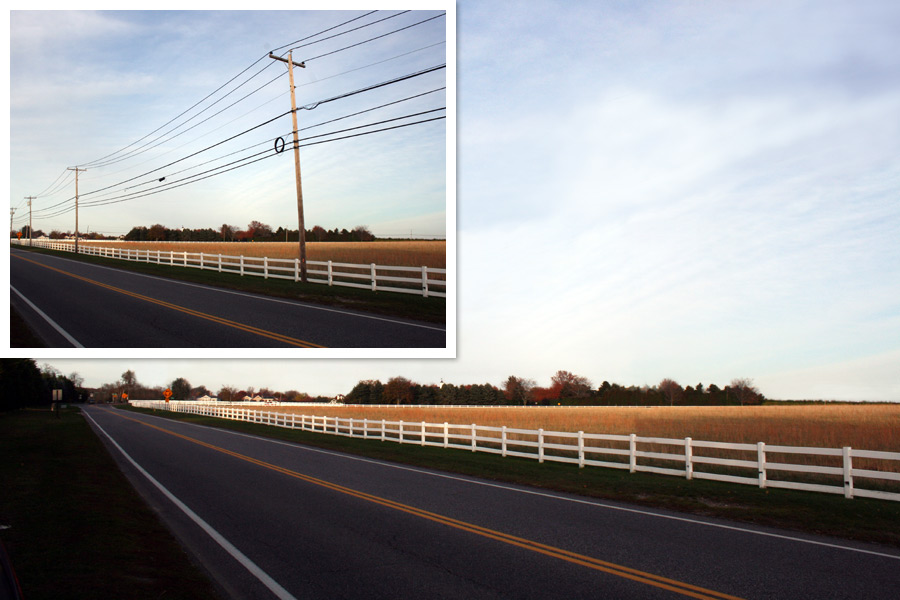Utility Poles: Ugly or Beautiful, We Can Get Used to Anything

This past spring, our local power company marched through East Hampton planting about six miles of 60-foot-tall giant utility poles. These were almost twice as high as regular utility poles. And they marched down not only main streets but also little narrow back streets such as McGuirk Street, making the modest homes along those streets look like so many dollhouses.
The general public was outraged at this. Letters to the local papers were written. Protest signs were put up. Our local government officials appealed to Albany to get this matter addressed. But the only thing that got accomplished was that several public hearings were held, during which time agents from PSEG (Public Service Enterprise Group) said they were not there to debate with opponents but just there to tell everybody what they were doing, which was improving the power base for the area in case of an emergency.
This satisfied nobody. And the protests continued. But soon the voices of the outraged appeared to peter out. Today, the giant poles remain, but now it seems nobody notices any of them. They just blend into the landscape, just like the lower 30-foot poles did back in their day. Indeed, I heard someone tell me the other day that they thought a particular part of East Hampton was as beautiful as anywhere else in the world. It was in a place where the poles loomed.
I can think of many other examples of this phenomenon. In Sagaponack, Ira Rennert, over a period of a few years, built a giant mansion on 63 acres of former potato field that is said to be the second or third largest private home in America. From the moment the ground broke, until the project was done, the Rennerts were vilified for doing this, the town building inspector who signed off on it was declared to be the devil incarnate and there were people in the community, such as Kurt Vonnegut, who said they would move away if this project were allowed to be completed. When the building was finished and the landscaping was put in, however, most people declared that all this looked pretty good.
One might argue that people’s outrage was just about the mess being made. That when it was cleaned up, it all got forgiven. Or it could be argued that once the matter is decided and a winner declared, everybody moves on to something else. But I would like to argue that what happens is that people just get blind to what they earlier got so agitated about. It just all blends in.
I have little doubt that back in the 1920s when telephone poles, little ones, were marching through the landscape, people said the beauty of the place was ruined. But then, maybe it took a few months, people just took it all for granted. And from that point on the beauty of a place INCLUDED 30-foot telephone poles.
Well, 30-foot telephone poles with the wires stringing along are not beautiful at all. They are spikey, troublesome obstacles that fairly well ruined the 20th century, in my opinion.
One of the most beautiful places to ride a bike these days is the road called Daniels Lane in Sagaponack. It is a narrow two-lane affair that runs through potato fields connecting Town Line Road with Gibson Lane. Fifty years ago, this road ran along without a single telephone pole and you could just see how stunning it was. Today most of it has telephone poles, but there is still one stretch, between Fairfield Pond Lane and Peter’s Pond Lane, which up until recently, continued along unobstructed.
About five years ago, however, NO PARKING signs appeared on metal posts, about 50 yards along one from the next along that stretch and, in my opinion, that was it.
Except now, I still think that stretch is beautiful.
The moral: It’s all in the eye of the beholder, and if the beholder just ignores things that make the world ugly, we get what we deserve.



